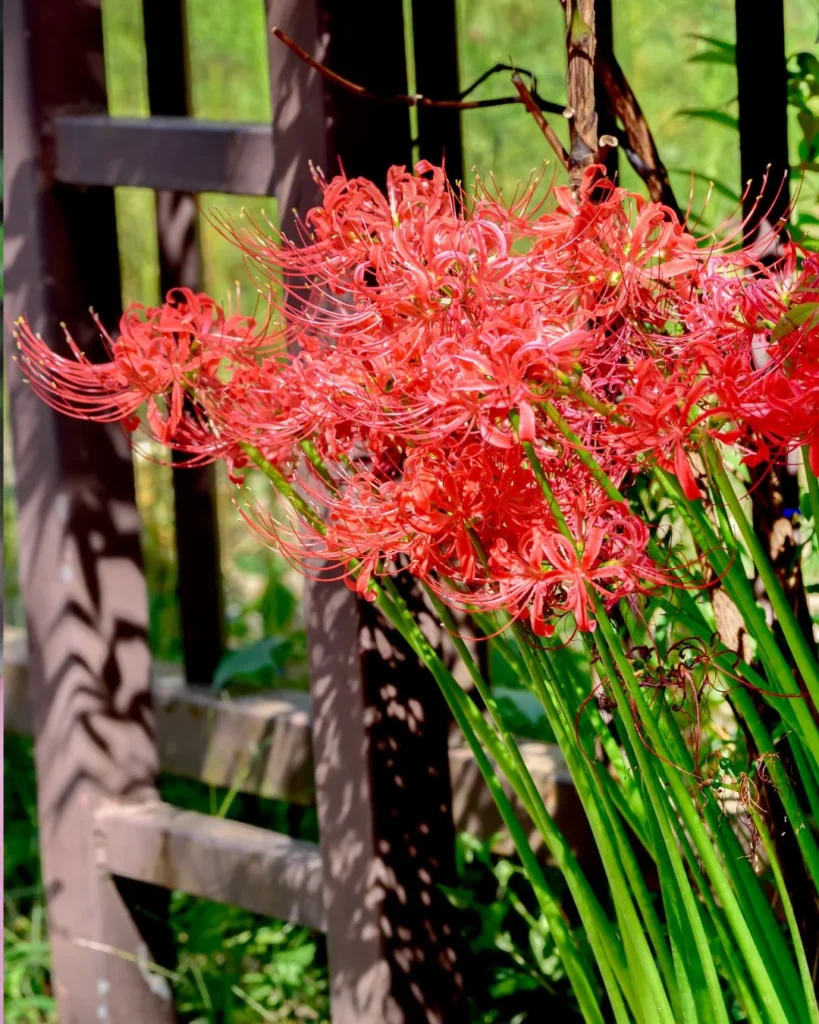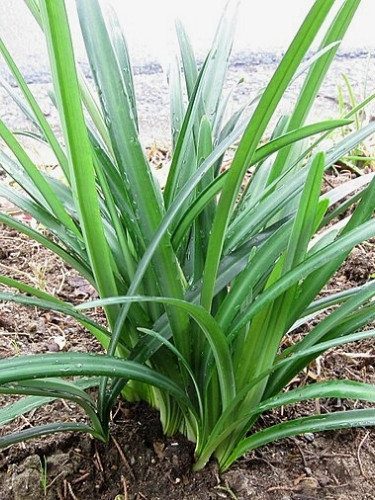
The red spider lily (Lycoris radiata) is a bulbous, herbaceous, perennial plant with lavish flowering, native to China. It holds significant symbolism in Buddhism and Japanese culture, representing death, pain, and longing. For this reason, it’s traditionally used in cemeteries to honor and remember loved ones who have passed away. However, despite what it may seem, this species wasn’t initially used for decorating graves. It’s a poisonous plant, so it was cultivated to prevent rodents from digging up remains. For the same reason, it’s also used to protect rice fields, cultivated as a border plant in fields.
It features a tunicated underground bulb and basal rosette leaves with a dark bluish-green color and a lighter central line. The leaves are elongated, linear, and narrow, with a leathery to fleshy texture. Its inflorescences appear between late summer and autumn, usually after a rainy period, and have a long duration. They are of the umbel type, with stems 30 to 70 centimeters (12 to 28 inches) tall and 4 to 6 bright red-coral flowers. The flowers consist of 6 elongated, narrow, and curved petals with long stamens.
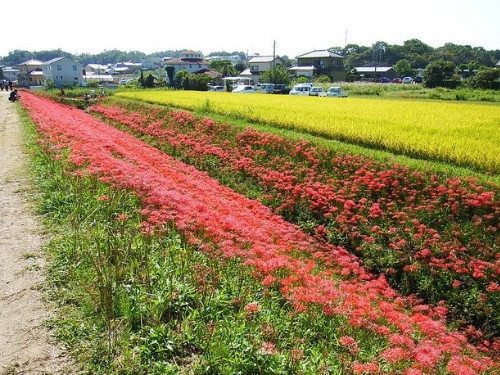
One unique feature of this species is that the leaves and inflorescence never appear at the same time. First, there’s flowering, followed by the leaves, which remain throughout the winter. For this reason, both in Chinese and Japanese cultures, it’s also a symbol of the cycles of life and renewal. There are also different varieties, cultivars, and hybrids, which can have varying heights and flower colors, such as golden yellow, pink, or white.
In landscaping, the red spider lily should have a prominent place, as its large, red flowers can’t go unnoticed in any composition. The effect of the blood-red spots is truly stunning. Since it prefers well-drained soil, it’s an excellent choice for plateaus and raised beds. In fact, it’s a great option for creating mass plantings or colorful borders that stand out in the garden.
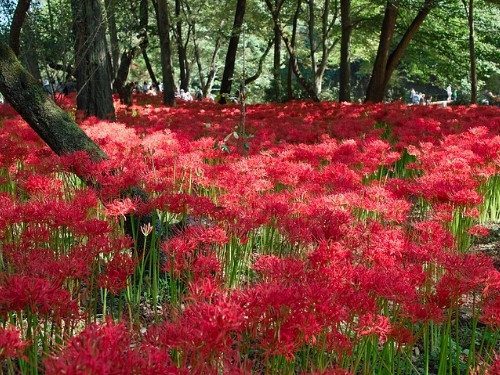
Due to its well-defined cycles of flowering, growth, and dormancy, it’s a top choice for gardens that change throughout the year and celebrate seasonal shifts. It can also be planted in pots, in groups of 3 to 5 plants, for a more visual impact. Moreover, the red spider lily is an excellent cut flower, used in arrangements and bouquets, with a long lifespan. It’s highly attractive to butterflies and other pollinators, adding even more life to the garden. It doesn’t require much maintenance; just make sure to remove yellowed and withered foliage at the end of the cycle.
It should ideally be grown in partial shade with morning or afternoon sun, but it can tolerate full sun, especially in colder climates. It prefers well-drained, deep soils rich in organic matter.
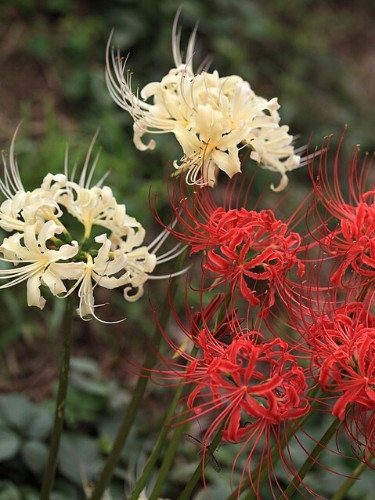
Watering should be done when the soil is superficially dry, with slightly more during the pre-flowering stage and moderate watering throughout the flowering and leaf development. During the dormant period, in summer, it’s best to reduce watering to a minimum. In areas with a humid summer, it’s advisable to cultivate it in pots. In colder seasons, it should be protected with a mulch covering, such as leaves, pine bark, or straw, and can withstand temperatures down to -5°C (23°F). It’s essential to avoid frequent replanting of this species, as they don’t appreciate disturbance of their roots. Instead, consider renovating beds every 6 or 7 years to refresh the soil and divide clumps to maintain plant vigor. Red spider lilies can be propagated by dividing the bulbs or through seed planting. Plant the bulbs at the end of summer, before flowering, covering them with soil 2 to 3 times their height. In moist beds and pots, it’s interesting to leave the top of the bulb exposed above the soil for better development. Flowering will begin after the second or third year of planting.

